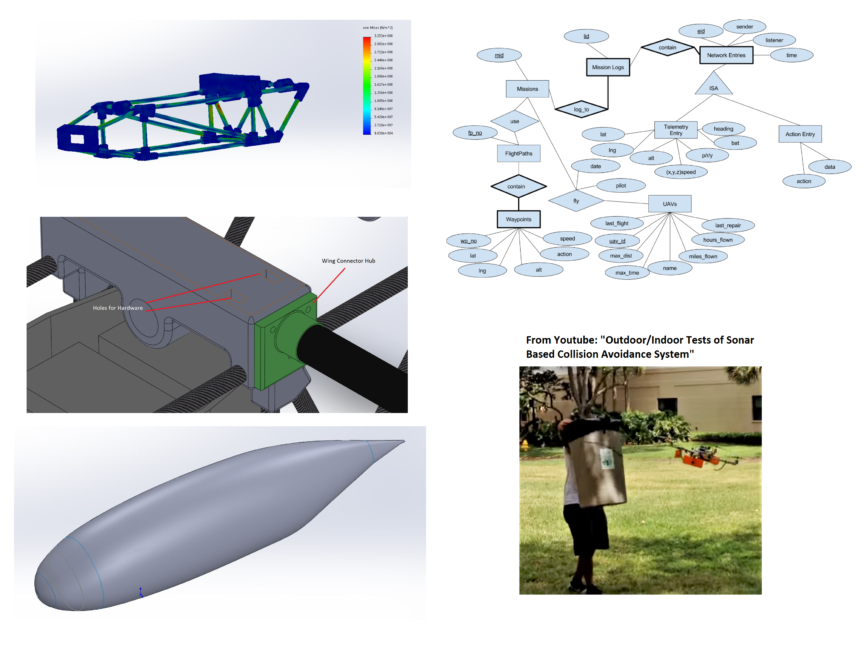The Propulsion team performed their first flight test with the tandem tilt rotor prototype last Saturday. Unfortunately, the test failed and they burnt the 4 servos on left nacelle. They found that the power wires were in the wrong places and too much power was put into the servos. The replacement servos were on back order, so Propulsion ordered different servos that have less torque. They will work on replacing the servos for the next flight test.
The Mechanical Design team continued their FEA testing and determined that the electronics housing fails at 2 meters. They also performed a successful drop test on the frame after fixing a Solidworks model issue. The diagonal truss wasn’t fitted or mated into the holes of the joint so after correctly the components, Solidworks was able to mesh the model and perform a FEA test. Mechanical Design finish an iteration of fuselage that fits the newest frame. Lastly, the team is still working on designing the wing connector hub joint that will secure the wing spar assembly.
Fabrication has been working on the wing assembly. They added filler to the leading edges of the wings and prepped the wings for monokoting and wiring. For next week, the team is prepping all the control surfaces. Fabrication has also began manufacturing the plane’s fuselage.
Ground Station is continuing their research on MAVLink. They found it is more difficult to create their own network code so they are seeking help from other open-source ground station programs, such as APM Planner and QGroundControl. They are analyzing how these programs interface with MAVLink. The Pixhawk won’t know the difference in the codes used by different program (so as long as they are using the same language and syntax). Ground Station is also designing a new database that uses the new functions they’ve created in the past, seen in the picture above. Team lead Jordan credits that his class experience in CompSci 122, Data Management, has aided him in his work.
Avionics is working on the analyzing the code that the Pixhawk is outputting. They found some function call chains such as control_*, which can control 9 or 10 different flight mode files. They also problem solving the sonar data by using “if” statements to check whether the data is within a sensible range. Avionics has fixed the critical tilt-rotor wiring issue. Three heli servos and 1 tilt rotor servo burnt out because the 5-volt and 25-volt wires got switched to the wrong pins. The team is also started prototyping and testing their switching circuit design and the battery bus. The switching circuit is for the tilt rotor control system in general. Lastly, Avionics presented a video from Youtube of their ideal obstacle avoidance system. The sonar is pointing downwards to read altitudes but Avionics wants to modify the code so that when the sonar is pointed frontward, it can read sideways altitude.

